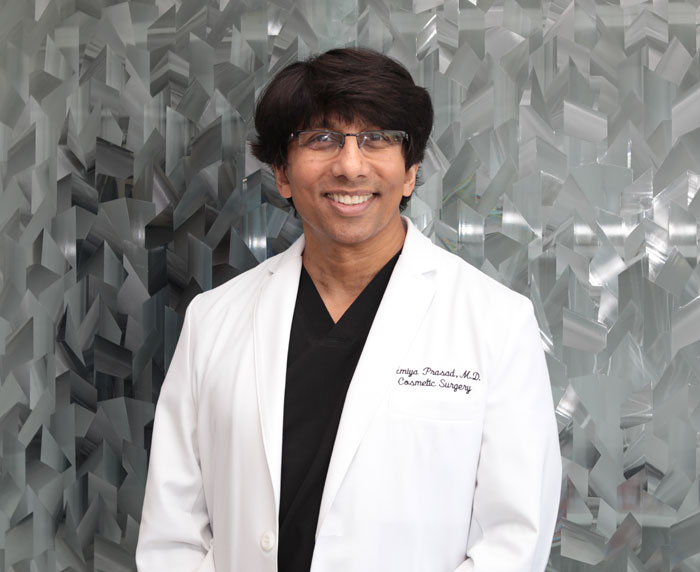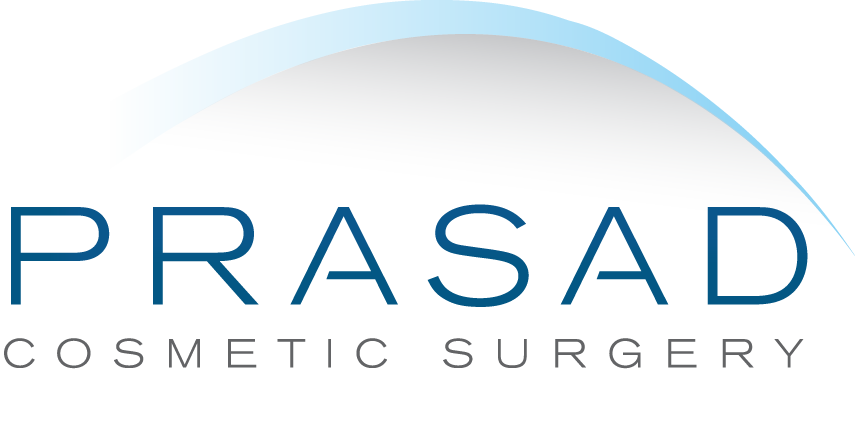Understanding Hair Transplant Risks and Non-Surgical Hair Restoration Alternative
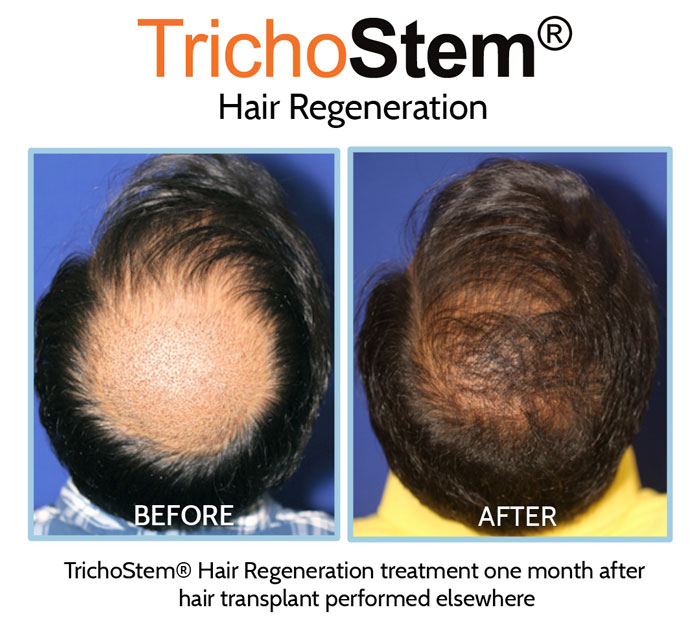
Hair transplantation is often the first procedure people consider when they try to treat their pattern hair loss. Hair transplantation is sometimes overlooked as surgery, and any surgery carries a certain degree of risk. Let’s explore the risks associated with hair transplantation and discuss an innovative, non-surgical alternative TrichoStem® Hair Regeneration.
The Risks of Hair Transplant Surgery
Hair transplant surgery is unique because there is no standardized Board-certification for this procedure. Unlike other surgeries such as facelifts, this allows a wide range of practitioners, including non-physicians, to perform surgical hair transplants. As with any surgery, the risks involved are greatly influenced by the experience and expertise of the surgeon.
Do Hair Transplants Ever Go Wrong?
Yes, there is a possibility. One significant risk is undergoing hair transplant surgery too early, particularly for men in their 20s.
Early-onset pattern hair loss is typically more aggressive and rapid. These patients often desire hair density comparable to peers without hair loss, but this is unrealistic. Even multiple transplants cannot keep up with the progression of hair loss, eventually leaving sparse, transplanted hair and an unnatural scalp appearance. It’s generally recommended to wait until age 30 or later for hair transplants, as hair loss stabilizes and resembles the hair thinning patterns of peers.
Another risk is collateral loss occurs when transplanted grafts damage surrounding native hair follicles. Surgeons often fail to disclose this, as native hair is already thinning and expected to disappear over time. However, thinning native hair can grow closer together than transplanted grafts, offering a more natural appearance if preserved. This is why avoiding collateral loss is a critical focus in my practice.
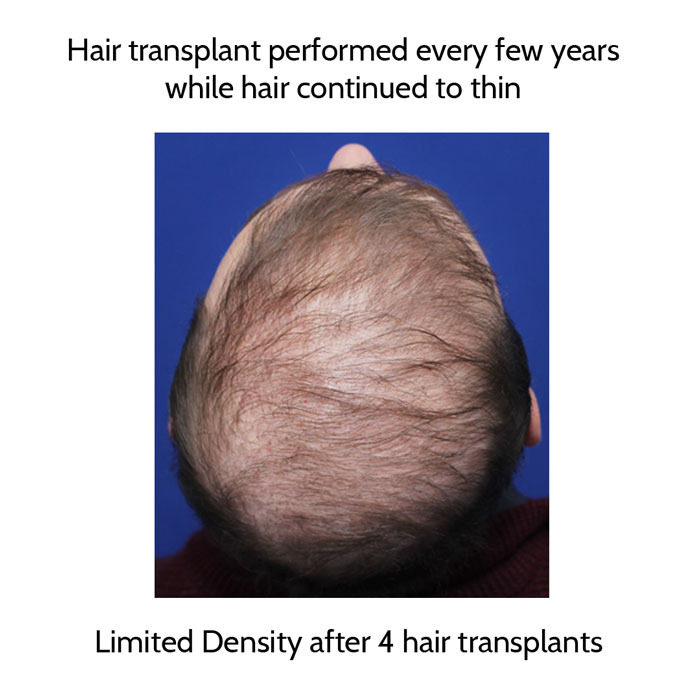
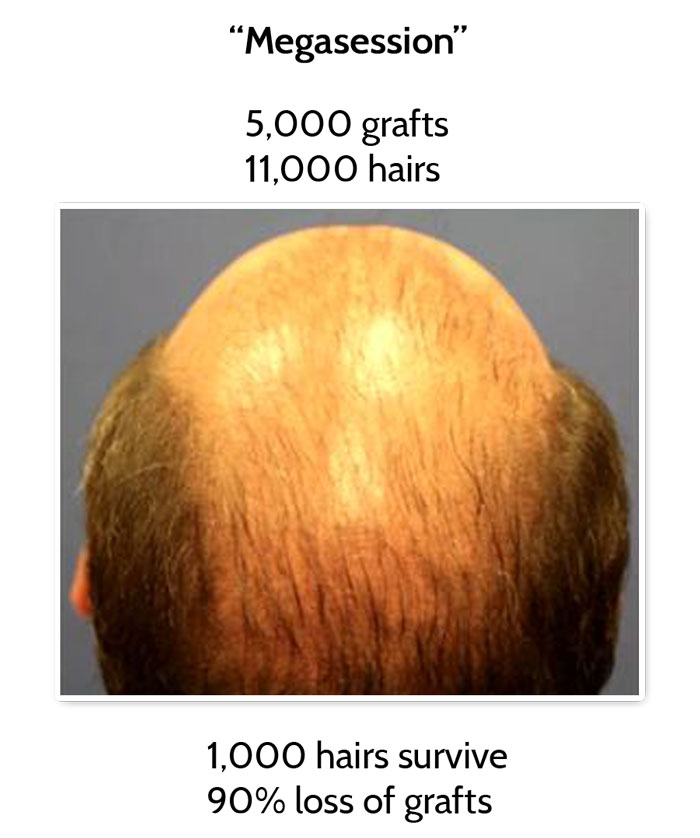
Challenges of Hair Graft Transplants
The scalp has a limited capacity for transplanted grafts due to skin integrity and blood supply. Safe transplant density is about 20 grafts per square centimeter, whereas natural hair density ranges from 50 to 100 hairs per square centimeter. Exceeding this density compromises the survival of grafts, with as much as 90% failing to grow.
Megasession surgeries involving 5,000 or more grafts often lead to graft loss. These procedures, performed over 1–2 days, place strain on the scalp’s blood supply, resulting in permanent loss of grafts that fail to heal.
Graft harvesting techniques can significantly impact success rates. FUT (Follicular Unit Transplantation) minimizes damage by harvesting a strip of hair-bearing skin from the back of the head.
In contrast, FUE (Follicular Unit Extraction) is more prone to graft damage due to individual punch extractions and pulling, resulting in up to 30% of grafts being damaged during the process.
A notable risk of FUE is that many transplanted grafts are taken from areas outside the permanent zone, which are not genetically resistant to thinning. Over time, these grafts may thin and disappear, undermining the results of the procedure.
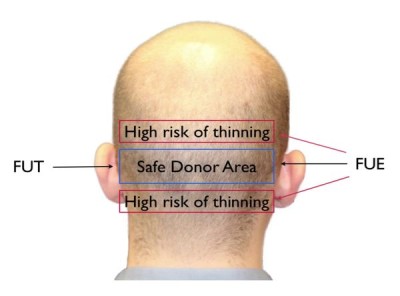
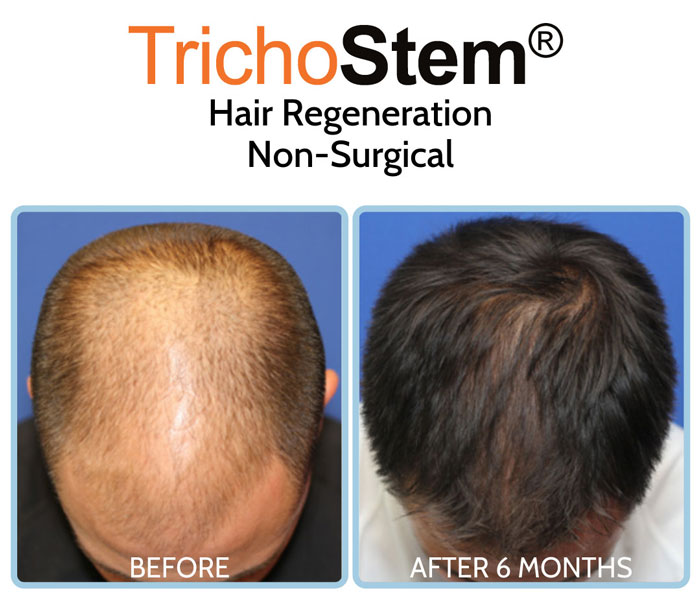
A Non-Surgical Hair Restoration Alternative
In my practice, I discovered that applying extracellular matrix by the company ACell with platelet-rich plasma (PRP) not only improved graft survival, but also thickened native thinning hair. This led to the development of TrichoStem® Hair Regeneration, a non-surgical solution for male and female pattern hair loss (female pattern baldness).
Benefits of TrichoStem® Hair Regeneration
This treatment thickens thinning hair, reactivates dormant follicles, and stimulates new hair growth. Unlike surgery which involves graft placement, this treatment works with existing hair for a more natural result.
Key benefits of TrichoStem® Hair Regeneration include:
- Long-Lasting Results: One to two treatment sessions provide benefits for 3–5 years or longer.
- Minimal Risk: With over 99% of patients seeing increased scalp coverage, the risk of failure is negligible.
- Natural Density: Native hair grows closer together than transplanted hair, providing superior scalp coverage.
When is Surgery Still Necessary?
For patients with advanced hair loss, hair transplant surgery may still be needed. However, TrichoStem® Hair Regeneration can optimize results by thickening native hair, reducing the number of grafts required, and ensuring transplanted hair is placed where it’s most needed.
Why TrichoStem® Hair Regeneration is a Game-Changer
By preserving and thickening native hair, TrichoStem® Hair Regeneration can exceed the results of even two transplant surgeries in patients with viable hair follicles.
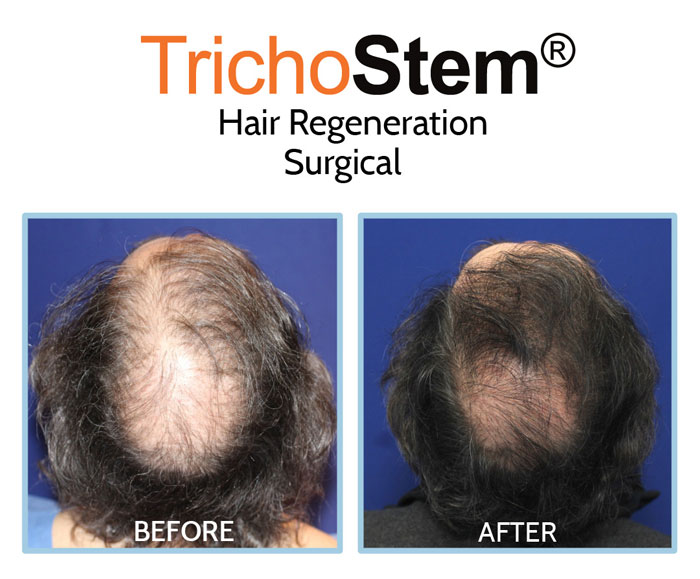
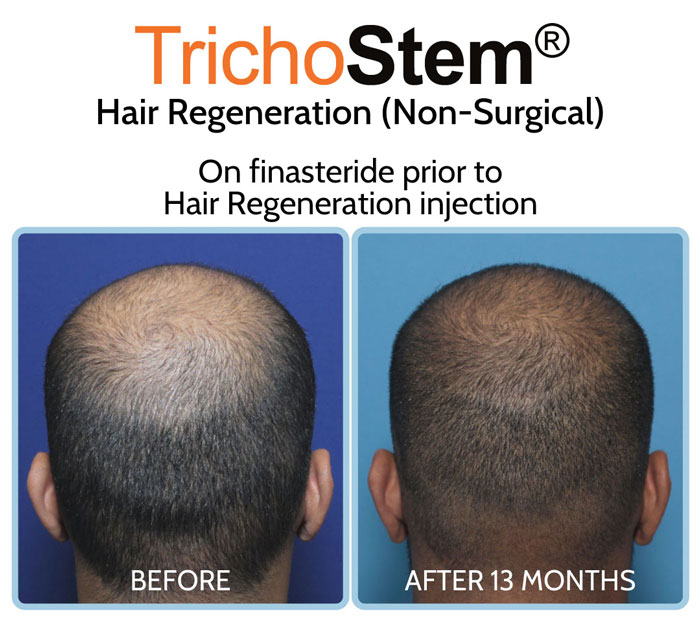
The treatment also stimulates dormant follicles to grow hair and provides an additional boost with a second injection after 15–24 months.
Younger men with high DHT sensitivity are advised to use finasteride for maximum results and longevity. However, patients can discontinue using minoxidil after undergoing this treatment. View our patient case studies.
A More Predictable Approach to Hair Restoration
Hair transplant surgery carries risks, especially with varying levels of surgeon expertise. While no treatment is entirely risk-free, TrichoStem® Hair Regeneration provides a safer, more predictable approach to hair restoration by maximizing hair thickness and scalp coverage without the complications associated with surgery.
Non Surgical Hair Restoration Manhattan, New York City and Garden City, Long Island, New York
Dr. Amiya Prasad is the Vice President of the American Board of Cosmetic Surgery, and a Fellowship-trained oculofacial plastic and reconstructive surgeon. With over 25 years of experience in New York City and Long Island, New York. Dr. Prasad performed countless surgical hair transplants, his focus is on providing innovative solutions like TrichoStem® Hair Regeneration to give patients optimal results.
If you’re interested in personalized recommendations for your hair restoration journey, feel free to fill out the contact form below, or call our offices at Manhattan, New York City (212) 265-8877; or in Garden City, Long Island, NY at (516) 742-4636; or in Vienna, Virginia at (703) 356-1336 to schedule a consultation.
